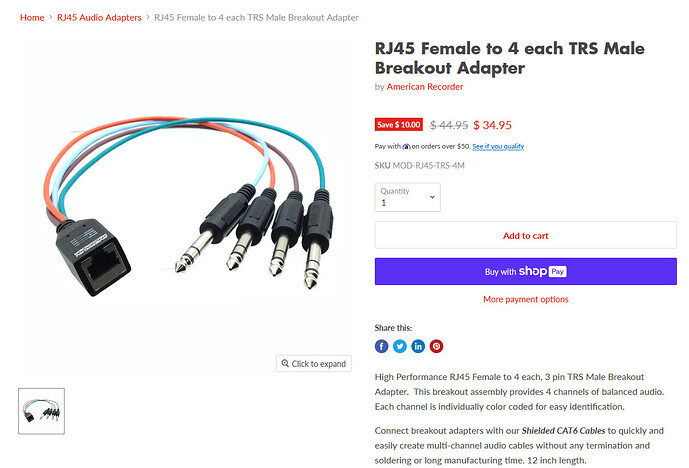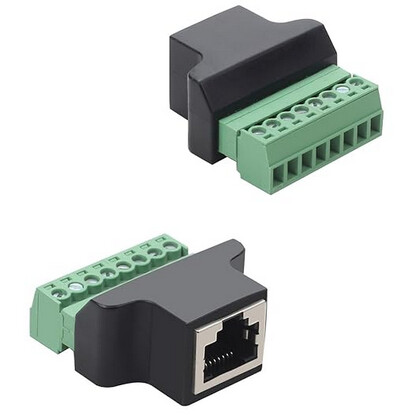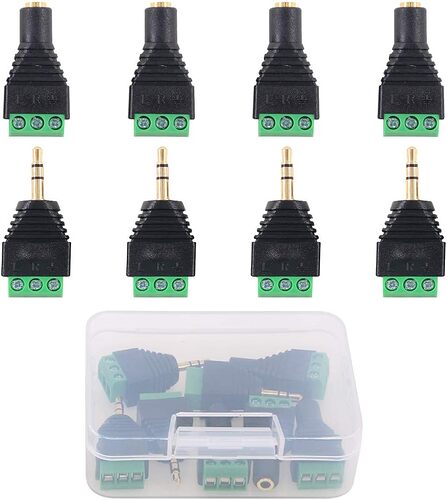Hi @overeasy ,
Sorry to revive a topic that I’m sure you feel like you have addressed a number of times over the years, but there is some fundamental knowledge I don’t have (in particular WRT resitance) that I’m hoping you could assist with.
I have my IoTaWatt unit very close to (directly underneath) my main switchboard breaker box, so the majority of my circuits are happily monitored with these 1.5m SCT-013-000 CTs. Like a number of punters who have raised this kind of question, I have a sub-board on a separate building at the back of my property that I’d like to be able to get some CTs into.
The back building with the sub-board contains my home office, and in order to network the office to my main house, many years ago I ran 2 lengths of cat6 cable from one building to the other (I forget the exact cable length, but each would be less than 30 metres long). The cables happen to run right past the main breaker box where the IotaWatt lives, all the way right past the sub-board containing the circuits I want to monitor and into my office. I’m trying to work out how easily (or otherwise) I would be able to hijack 1 length of cat6 to act as an extension for the CTs.
The home office building also provides the roofspace for my solar system, which has 2 inverters that live just above the sub-board. For this setup there are 2 lengths of conduit running from the inverters to the main box, one housing a 6mm electrical cable for the Solar Feed, and the other a network cable for the solar meter in the main box (which reads the 6mm cable using its own CT) to communicate with the inverters. The cat6 cables I ran are in 20mm PVC conduit for the entirety of the outside portion of their run, and are separate from any other electrical cables (at least a couple of metres away from the inverter conduits for all but the very ends where they get close, but are still physically seperated by their respective conduits).
The Cat6 cable that is already in place was decent at the time, and easily supports gigabit ethernet speeds, but is unshielded. For reference it has “CMX Category 6 24AWG 4PR verified (UL) CAT6 ANSI/TIA-568-c.2 0004m 0316” printed on the jacket. I’m aware that running electrical alongside data cable is a bad idea, but I’m unsure exactly how close (and for how long) the cables need to be before this presents a problem. What I do know is that I haven’t been able to detect any performance impacts to the network since the Solar setup was installed.
I was considering soldering 3.5mm jacks like these and these to the solid core wires in the cat6, hopefully using (up to all 4 of) the twisted pairs in the cat6 as an extension for a separate CT, so the one length of cat6 would effectively extend 4 CTs.
I have read every thread/post/comment I can find which touches on this subject (most notably this one and
Long CT extension leads and transformer type which many of the other posts point to anyway). From what I can gather, in general it seems to be assumed that cat6 should work well as an extension, but when the conversation starts to rely on knowledge of the current each CT pushes and the relative resistance of different cables I admit I get lost.
If I do proceed, I’ll certainly be trialling and testing it with cable that is not already part of the infrastructure, though the test cable is identical, having come from the same spool. Before I try it though, I’m just trying to get an educated opinion, given the setup I’m working with, on whether it’s obviously a waste of time to someone who knows more than I do, or whether it’s at least worth a try.
Any advice or opinion you can share would be appreciated. Assuming I do give it a go, I will definitely report back with the outcome and any relevant findings.
Cheers,
Pete




